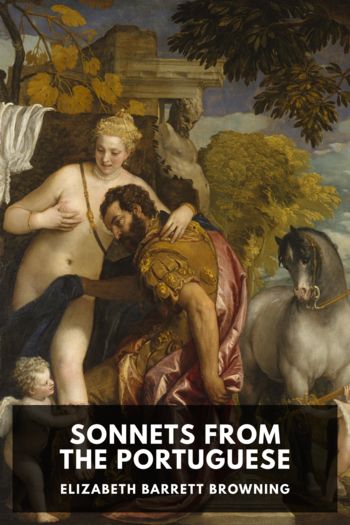Two-Way Mirror Fiona Sampson (best romance ebooks .txt) 📖

- Author: Fiona Sampson
Book online «Two-Way Mirror Fiona Sampson (best romance ebooks .txt) 📖». Author Fiona Sampson
Trepsac is a French family name, intriguingly associated in the eighteenth-century Caribbean most strongly with the leader of the Dominican Order on Martinique: race and religion are as entangled for Treppy as for the Barrett family ‘proper’. While Nonconformism offers a form of moderate radicalism that particularly suits the Barretts’ ambiguous social position, in the 1830s social upheaval and religious revival are tangling on all sides. In Dublin, biblical literalists calling themselves Plymouth Brethren are rejecting the Anglicanism of the Anglo-Irish Ascendency; at the ‘other’ end of Revivalism the Anglo-Catholic Oxford Movement is founded by John Keble and John Henry Newman in 1833. Radical spirituality supplies drama to the drab lives of the labouring poor even as it denies their aspirations. This is a moment when Britain seems poised to follow its continental neighbours, and former colonies in North America, into violent social revolution. But Nonconformist Revivalism preaches individual self-determination rather than political reformation. (It objects to slavery as a check on individual rights, not as a social failure.) So its social effect is stabilising rather than radicalising; it puts a brake on the political consciousness of the working people for whom it’s the only access to ideas, education and collective participation.
In Sidmouth Elizabeth, too, is finding that Nonconformism offers her both a new community and ideas to explore. Marsh Congregational Chapel, where she worships, was built in 1810 and boasts an active congregation. Its minister, the Revd George Hunter, a charismatic preacher and driven leader, excels at eliciting bequests for the thriving Sunday school. He’s also the perfect object for a crush, since his wife is absent, ‘removed […] by a stroke worse than death .. madness! & there is no hope of a restoration’, and he has a little daughter, Mary, who turns ten in 1836. Sure enough, he soon turns up in Elizabeth’s letters. Evidently, the fashionable congregation may donate to appeals but don’t pay a generous salary: his ‘circumstances are miserably straitened, & the only apparent opening lies [in] pupils’, as she notes later, while soliciting teaching work for him. With plenty of experience of schooling younger siblings herself, she now secures permission to tutor little Mary Hunter, who goes on to become a lifelong family favourite. Papa even gives the sisters permission to accompany Hunter when he preaches out of town.
Once again Elizabeth has set up, right under her father’s nose, a scenario in which she serves as helper to a man who inspires her intellectually. But nothing indicates that the Revd Hunter is manipulative like Mr Boyd. Indeed, for all his charismatic intensity, surviving correspondence suggests a man more vulnerable than in control. Nervy and needy, like his wife he too will end his days in an asylum. And so Elizabeth’s friendship with him doesn’t turn into obsession but remains a conduit through which her interests and emotions can become more public and dispersed. In fact, we could say that hers is a case in which the Revd Hunter’s ministry pays off. As doctrinal debates displace classical poetics in appealing to her intellectual side, the Sidmouth poems are markedly more spiritual than those that precede and follow them. A new, devotional tone appears in her correspondence.
This same tone brings her closer again to her father. Each is now seeking solace and meaning in a life whose main project seems to have been cut short. Resignation feels like the meanest of virtues, a piece-by-piece renunciation of any number of hopes. But it can also be a gesture, a way to bundle up everything that’s risky, unspeakable or uncertain into one big statement of abdication. In Sidmouth in 1833–34 Papa is preparing for a future as a man of reduced significance, and Elizabeth for a spinster life of indifferent health.
She also has her first taste of failure. In May 1833 her translation of Aeschylus’s Prometheus Unbound, together with some of her own poems, is issued by a proper, unsubsidised publisher, A. J. Valpy, in his Classical Library. It’s an exciting milestone, and the submission is Papa’s idea. One reason Valpy accepted the manuscript may have been a small but significant poetic triumph that Elizabeth had recently achieved. In January 1832 The Times rushed her poem on cholera into print a mere four days after receiving it. But when, the following month, she made the Aeschylus translation, it was her turn to rush, hurrying to complete the work within a fortnight in order to impress Boyd – a misjudgement all the more understandable in those emotionally chaotic last months at Hope End. Now the book is out, and the few reviews it receives are far from positive. Worst of all is The Athenaeum’s single-sentence notice: ‘Take warning by the author before us.’
Perhaps this is a necessary failure. It certainly helps reset the direction of Elizabeth’s work. She’s twenty-eight; the time for classical studies, however advanced, is clearly over. If she doesn’t step up now as a poet in her own right she never will. It can only help that within the year that inveterate classicist Mr Boyd will at last have left for London. Even so, such resets take time. Outside the window beyond her writing desk, the seasons pass. ‘Sidmouth is a nest among elms; and the lulling of the sea & the shadow of the hills make it a peaceful one.’ Elizabeth finally emerges from a period almost of dormition in September 1835, with the publication in The New Monthly Magazine of ‘Stanzas Addressed to Miss Landon, and Suggested by her “Stanzas on the Death of Mrs Hemans”’. It’s the first in a flurry of magazine publications over the





Comments (0)